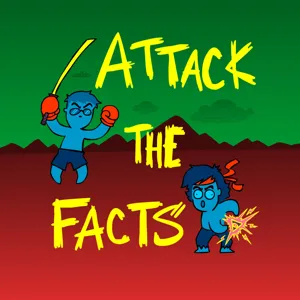Podcast Summary
Building strong community connections during uncertain times: Neighbor to Neighbor empowers individuals to grow their communities and help each other out. AI is expected to transform industries, while podcasts provide valuable insights and encouragement. Historical responses to crises like the Black Death emphasize the importance of community and human connection.
During uncertain times, building strong community connections can bring hope and prepare us for challenges, be it natural disasters or everyday needs. Neighbor to Neighbor, a California volunteer network, is an excellent example of this, empowering individuals to grow their communities and help each other out. Meanwhile, as we look to the future, artificial intelligence is expected to play a significant role in transforming various industries. In the present, podcasts like Technically Speaking and Conversations with UNK offer valuable insights and encouragement. Additionally, the response to the 14th-century Black Death reveals the importance of community and religious beliefs during times of crisis. Despite ongoing debates about the historical accuracy of these responses, their significance lies in the human connection they fostered.
Beliefs about Illness during Medieval Period: Humoral Theory and Miasma Theory: During the medieval period, people believed illness was caused by imbalance of bodily fluids (Humoral Theory) or bad air (Miasma Theory). While some aspects were correct, these beliefs also included superstitions and divine intervention.
During the Christian European medieval period, people held a variety of beliefs about the cause and treatment of illness. Two prominent theories were the imbalance of the four humors and the spread of disease through bad air, or miasma. The humoral theory, rooted in ancient Greek thought, suggested that an imbalance of bodily fluids could lead to disease, and treatment involved rebalancing these fluids through methods like bloodletting. Miasma theory, also with ancient origins, posited that disease spread through foul air or vapors, leading to preventative measures like avoiding bad air or purifying it. While some aspects of these theories had accidental merit, they were ultimately incorrect. Historian Michael W. Dols, in his work "The Black Death in the Middle East," highlighted that people of the time often attributed the ultimate cause of these maladies to divine intervention or supernatural causes. Thus, the complex interplay of natural and supernatural beliefs shaped the understanding and response to illness during the medieval period.
Beliefs about plague during the Black Death: Despite flawed understanding, beliefs in miasma theory led to practices like changing air or wearing scented masks, offering some protection.
During the Black Death, both Muslim and Christian societies held similar beliefs about the cause of plague, which was based on the miasma theory. This theory led to practices like changing the air to prevent infection, such as moving to a new location or sweetening the air with pleasant scents. These practices, though based on a flawed understanding of disease transmission, aligned with natural human responses to potentially harmful or infectious agents. The belief in miasma theory influenced the design of plague doctor masks, which were intended to filter the air, not the droplets carrying viral particles. Though these masks came centuries later and may not have been as widespread as believed, they reflect the dominant thinking about disease transmission during that time. The intuition behind these practices, even without an understanding of the actual cause of disease, provided some level of protection.
Protecting oneself from plague: Avoid infected areas and build community connections: Avoid plague-prone areas and strengthen community ties for effective prevention. Fast relief for allergies with Astepro, and emotional growth through 'A Really Good Cry' podcast.
Protecting oneself from plague involves avoiding areas where the disease is prevalent, whether that be from infected animals carrying fleas or infected people transmitting the disease through human lice and fleas. This is an effective method of prevention regardless of the dominant mode of transmission. Additionally, building a connected community through initiatives like Neighbor to Neighbor can provide support and help during uncertain times. On a different note, for those suffering from allergies, fast-acting relief can be found with Astepro, the first 24-hour over-the-counter allergy spray. And for those seeking emotional growth, Radi De Vlucchia's new podcast, "A Really Good Cry," offers a safe space to process difficult emotions and build meaningful connections.
Belief in supernatural causes for illnesses during European Middle Ages: Despite widespread belief in supernatural causes for illnesses during European Middle Ages, high mortality rates of diseases like plague challenged these beliefs, leading to harmful consequences such as persecution of those accused of witchcraft.
During the European Middle Ages, the belief in supernatural causes for illnesses was widespread. People believed that diseases, particularly the plague, were either a punishment for individual sin or a result of divine judgment against entire groups or cultures. This belief led to various interpretations, including the idea that demons had limited powers and could not cause certain types of harm, or that witchcraft and magic were responsible. While some of these beliefs may have seemed to provide explanations, the staggering mortality rates of diseases like the plague challenged these beliefs and led to disastrous consequences, including persecution of those accused of practicing witchcraft. In summary, the belief in supernatural causes for illnesses was prevalent during the European Middle Ages, but its limitations were revealed by the reality of diseases with high mortality rates.
Religious responses to the Black Death: During the Black Death, people turned to prayer, penance, and self-punishment for prevention and relief from suffering. Religious practices gained popularity as a grassroots means of seeking comfort, but the church saw these practices as a threat and labeled them heresy.
During the Black Death, people turned to various methods for prevention and treatment, including religious practices and self-punishment. Septicemic and pneumonic plague were devastating diseases, and without quick antibiotic treatments, the mortality rates were near 100%. Early beliefs about the cause of the plague led to religious responses, such as prayer and penance. Some extreme groups, like the flagellants, took self-punishment to the next level, believing that the power to remove sins resided in their own hands. These practices existed before the Black Death but gained popularity during this time as a grassroots means of seeking penance and relief from suffering. However, the church saw these practices as a threat to its power and eventually labeled them heresy. Overall, the Black Death led to widespread fear and desperation, driving people to explore various methods for prevention and treatment, including religious practices and self-punishment.
Public displays of mortification during the 14th century: During the Black Death, some religious groups believed publicly mortifying their flesh could purify them, turning individual spiritual experiences into communal ones.
During the 14th century, some religious groups believed that mortifying the flesh through public displays, such as flagellant processions, could purify them in the eyes of God. This practice, which was inspired by passages in the Bible, gained popularity during the Black Death when other forms of prayer and religious practices seemed ineffective. The public nature of these acts likely added a different kind of power, turning individual spiritual experiences into communal ones. While this idea is not unique to the groups we've discussed, it is interesting to note how it manifested in a public setting during this time. Monty Python's "Holy Grail" humorously parodied these practices, highlighting their unusual nature. The mortification of the flesh was a complex concept that dealt with pain, pleasure, and the meaning of suffering, which were common themes in many religions.
Mortification of the Flesh and Persecution in the Middle Ages: During the Middle Ages, organized groups practicing mortification of the flesh led to persecution and harm towards minority communities, despite it being an accepted form of penance.
Throughout history, there have been various movements and practices that challenged the established order, and the response from those in power was often a crackdown. This discussion touched upon the practice of mortification of the flesh during the Middle Ages, which was seen as an accepted form of penance but became a concern when organized groups formed around it, leading to persecution. These groups, while sometimes seen as threatening the authority of the church, also engaged in harmful actions, such as the persecution of minority communities and false accusations during times of crisis like the Black Death. It's important to remember that complex historical issues often involve a blend of religious, social, and political factors.
Intensified anti-Semitic sentiments during the Black Death: The Black Death led to widespread persecution, expulsion, and genocide of Jewish and other minority communities due to conspiracy theories and scapegoating.
During the Black Death in Europe, as people searched for explanations and scapegoats for the devastating illness, anti-Semitic sentiments and accusations of mass poisoning against Jewish communities intensified. This was not the first time such persecution had occurred, but the Black Death brought new life to these conspiracy theories. Religious leaders and communities turned to these accusations as they exhausted other explanations for the plague. The result was widespread persecution, expulsion, and genocide of Jewish and other minority communities. Despite the church's attempts to intervene, the religious crisis of the 14th century contributed to the Protestant Reformation in later centuries. The Black Death continued to be a recurring issue for Europe for centuries to come, and the crisis led many to question the role and effectiveness of the church. This period of intense fear and uncertainty ultimately laid the groundwork for significant religious and social changes in Europe.
The Black Death's impact on civilizations in the East and West: The Black Death caused widespread devastation, leaving cities and populations in ruins, weakening dynasties, and significantly accelerating social and economic changes in Europe and the Middle East.
The Black Death significantly accelerated social demographic and economic changes in Europe, but it's challenging to determine what the future would have been like without it, as other factors like famine, war, and a degraded standard of living were also pushing for change. The plague affected more than just Europe, with Islamic societies also experiencing its devastating impact. Ibn Khaldun, a 14th century Arab Muslim historian and philosopher, described the plague's destructive effects on civilization in the East and West, leaving cities and buildings in ruins, weakening dynasties, and causing populations to vanish. This passage serves as a poignant reminder of the devastating impact of the plague on civilizations throughout history.
Connecting in uncertain times: Ibn Khaldun and community building: Community building through sharing knowledge, lending a helping hand, and enjoying shared experiences brings hope, wisdom, and comfort during uncertain times.
Throughout history, from Ibn Khaldun to modern times, communities have faced challenges and found ways to connect and support each other. Ibn Khaldun, a 14th-century historian and philosopher, experienced loss and hardship during the Black Death but continued to write and share knowledge. Today, initiatives like Neighbor to Neighbor and Across Generations encourage community building and connection. Podcasts like Minnie Questions and Sleep Tight Stories provide opportunities for engaging conversations and calming bedtime stories, respectively. These examples remind us that even in uncertain times, coming together as a community can bring hope, wisdom, and comfort. Whether it's through sharing knowledge, lending a helping hand, or enjoying a good story, the power of community remains a constant source of strength.





